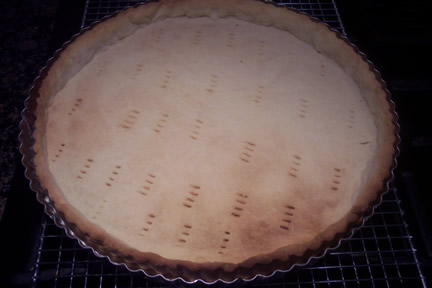Cooking ANYTHING essentially boils down to a set of four basic principles:
1. selecting ingredients according to their preferred characteristics.
2. applying processes to the raw ingredients in order to transform them into finished products.
3. using a common set of known formulas in order to achieve the goals of # 2
4. evaluating the outcome and adjusting either 2 or 3 accordingly
The fundmentals of each of the principles can then be broken down further and applied according to the individual recipe or dish you are trying to prepare.
1. Selecting:
Every ingredient has its preferred set of characteristics, and depending on the desired outcome, which of those characteristics is most important may vary greatly. A slightly under-ripe fruit may be exactly what you are looking for if you are wanting to accent its acidity, firm texture, or if it is being cooked for a long period of time. However, if it is intended to be served raw and at its ideal level of sweetness, then being at the perfect stage of ripeness and its unblemished appearance is key. However, a sauce, soup, or other item requiring a soft smooth finished texture may require the cook to search out over-ripe fruit, which ordinarily may have been removed from the produce rack and relegated to a discount shelf in the back. Making the determination before you go out shopping, or having the outcome in mind will ensure that the proper selection is contributing to the success of the finished product.
2. Processes:
Every stage in the cooking process has an impact on the final product. If you have selected the wrong product to begin with, you can never expect the desired results. Likewise with the preparation techniques, using the wrong technique or poor execution will determine or compound the results, Every part of the process, whether it is the way a product is peeled or cut before cooking; how it is prepared, mixed, or seasoned; how heat is applied and when; whether or not there is moisture present in the cooking process; and how it is treated after cooking will all affect the finished product, so here a little bit of knowledge goes along way. Understanding the basic principles of food science form your ability to not only achieve great results, but adjust for any variables you may encounter along the way.
3. Formulas:
In addition to understanding the importance of the processes and procedures one uses in the kitchen, having a repertoire of known formulas or basic recipes is essential. Cooking and baking always depend on the right combination of ingredients, the right proportions, and the right cooking method. For instance, knowing the ideal proportion of dry ingredients to liquid for whatever it is you are trying to prepare is essential. You can take the same ingredients, and by varying the proportions and methods, end up with very different results. A cake batter, pancake, muffin, biscuit, and cookie all have similar ingredients, but because all are proportioned, mixed, and cooked differently, they are all distinctly different finished items. The cook who understands the basis of these differences has then an infinite arsenal of recipes and his or her hands, and can set out to prepare a variety of things from any set of given ingredients.
4. Evaluating:
Now what if the results aren’t what you were intending? Sometimes this can be a discovery of itself, as some of the greatest recipes of all time have been “accidentsâ€. Take Crepes Suzette, for instance. The cook turned his back for moment, in which time his sauce caught on fire. Not having time to prepare another, he tasted it, and found the result to be exceptional, so proclaimed it to have been designed that way. Knowing what the root cause to the most common problems can be allows the cook to use all of his or her senses, to make the changes necessary so that the desired results and the outcomes are aligned. This does take some trial and error at first, but an experienced cook can make adjustments on the fly in many cases and turn a potential failure into a probable success.
Learning and applying these principles in the kitchen will be the focus of this series. But before we get there, we’ll talk about how to “think like a chef”

